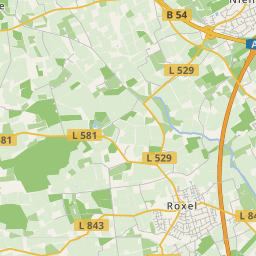











On the 24th of March, five female wolves arrived from the Polish zoo Wroclaw at the All-Weather Zoo - and thus the spacious facility in the children's and horse park became more lively. The new additions, which are widespread in Europe and Asia, show their typical pack behaviour, which is less pronounced of the in Münster living Iberian subspecies. The last two Iberian wolves have just been moved to a Czech zoo. Arrival and acclimatisation of the wolves, born in Poland in 2006, in Münster had gone well. After the first night in the barn, the five sisters were allowed to explore the outdoor facility. But when they explored every corner, it came to a quarrel. The alpha female wolf affirmed her position against the lower-ranking sisters - and thus ended with an injury at the hind leg of the weaker sister. Visitors should observe the position of the tail, then it is easy to see who is number one: The alpha female wolf carries her tail mostly horizontal, while the omega female wolf presses her tail hard between the hind legs onto her belly.
Part of spring is young animals! Apart from the 'stars' in the All-Weather-Zoo, like the rhinoceros girl 'Ebun' or the gorilla boy 'Thabo', new offspring has arrived here. In January a zebra foal came into the world and the waterbucks and the Philippine spotted deer had their young in February. The red-necked wallabies had five offspring in February and March. Here, you have to watch closely, because the little ones still live in the mum's pouch...

To raise chicks, some of the residents in and on the large bird aviary still have to sit on their eggs for a while longer. Two griffon vulture couples and a black vulture couple have built their nest in the facility and white storks have settled on the roof. Quite a few of these 'free flyer' have been breeding here in the All-Weather-Zoo for years, but this year in spring new couples have come along. Their nests can be found also in the two oaks in the children's and horse park, high above the elephant or in the Africa panorama. To see the, often flying away respectively landing, storks close up is a very special experience for many zoo visitors!